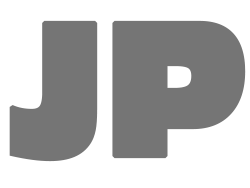I think the area of photography I like best is nature. I really enjoy wandering around the woods and just seeing what I can find. I love shots with neat skies, especially when you can catch fantastic shapes and patterns in the clouds. One area that I have wanted to experiment with is macro photography. Keep in mind as you read this and view the samples that I didn’t spend much time making the samples. I did them all without a tripod and with less than ideal light.

Early on I bought a set of close up filters. As you can see with this shot, they didn’t work to well. At first I thought it was just my in-experience with photography in general and I set them aside. I pulled them out a couple of times, but each time just got frustrated. I’m guessing the haziness is because I bought a cheap set of the filters. Maybe a higher quality set would work and look better.

My Sigma 70-300mm f/4-5.6 DL Macro Super II lens has a macro mode and it works pretty well. I was able to get this shot of a bug with it. But I could never get really up close with it like I wanted to. The advantage to using this is you have a greater working distance. So, if your subject is skitish this will help.

I did some reading on the web and found some suggestions to try reverse rings. These come in two flavors. The first type mount directly on the body of your camera and then allow you to screw your lens onto the ring with the lens turned around backwards. The second type, which I haven’t tried, mounts to the front of one of your lenses and then you can mount a second lense turned around backwards onto that by the filter rings on the front of the lens. The first type of reverse ring is what I tried and with your lens on the camera backwards you are able to get up close and focus. One downside to this is you lose all of your automatic features. Your metering doesn’t work, autofocus doesn’t work and you have to control your aperature on the lens itself. This isn’t the end of the world because at such close distances you generally have to focus the camera yourself anyways. It was a little wierd having to use the ring on the lens to control aperature, but that’s how they used to do it! One advantage to this method is price. The reverse ring cost about $12.50 off of ebay including shipping! As you can see by the shot it’s actually not to bad. Much better than the close up filters. You are limited by the filter ring size of your lens, so in my case I can only use one lens with it.

So after some reading on DPReview.com in the forums, I decided to try out the Kenko extension tubes. I had seen several shots by Cédric over at VisualExperience.com, like this one. I noticed he had used the Kenko extension tubes and thought I’d give them a try. I got them from B and H Photo. Out of the attempts at macro shots I like the Kenko extension tubes the best. This is an example of a shot with the tubes. With this method I was able to get the closest and get the most detail out of the methods I tried. One downside to this though is your working distance. If you are shooting static objects with a tripod it’s no big deal. I haven’t tried shooting live bugs or anything like it yet. I’ll let you know when it warms up outside!
There is another method of getting macro shots and that’s to get an actual macro lens. The Nikon 60mm macro lens is one I’ve read alot of people use. This is the most expensive method to getting into this type of shooting and not an avenue I have explored yet. The Nikon 60mm macro is $389 new from B and H photo. I imagine you can get it for a little less on ebay.I can’t wait for spring so I can get out the extension tubes and find some bugs to shoot. I doubt I’ll rival Cédric from Visual-Experience.com but I’ll try my hardest! If anyone has any experience with any of the methods or has any other method that I missed, I’d love to hear your opinion.
